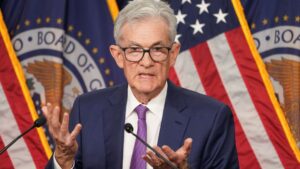Welcome to Extreme Investor Network, where we provide unique and valuable insights into the economy that set us apart from the rest. Today, we are diving into the recent reactions on Wall Street following this week’s Fed meeting.
The forecasts coming out of the meeting have been varied, with most economists from major forecasting firms expecting the central bank to lower benchmark interest rates at some point later this year. However, the range of predictions spans from one rate cut to as many as four, highlighting the uncertainty surrounding the future of monetary policy.
Goldman Sachs economist David Mericle characterized the May FOMC meeting as “mostly uneventful but dovish overall,” underscoring the mixed signals being sent by the central bank. Despite Goldman’s current call for two rate cuts this year, the firm acknowledges that unexpected inflation trends could alter this outlook.
Citigroup stands out with its prediction of multiple rate cuts ahead, with economist Andrew Hollenhorst suggesting that lower inflation numbers and a weakening job market could prompt the Fed to start cutting rates as soon as July and potentially continue until the end of the year.
Morgan Stanley’s chief U.S. economist, Ellen Zentner, is also leaning towards rate cuts beginning in July, citing the lack of progress in inflation and the labor market so far in 2024.
Barclays, on the other hand, sees a September cut at the earliest, depending on first-quarter inflation data. Chief U.S. economist Marc Giannoni emphasizes the uncertainty surrounding the timing of rate cuts, noting that a stronger-than-expected inflation could postpone the first cut to December.
Bank of America takes a more cautious approach, suggesting that the Fed is likely to stay on hold until there is more convincing evidence on inflation. Economist Michael Gapen highlights the Fed’s shift to a wait-and-see mode, indicating a potential delay in rate cuts.
With conflicting signals and differing opinions from major firms, the future of monetary policy remains uncertain. At Extreme Investor Network, we will continue to monitor the latest developments and provide you with unique insights to help you navigate the ever-changing economic landscape. Stay tuned for more updates and analysis from our team of experts.


